
After 18 years of construction, the new Qatar National Museum opened to the public this morning, revealing the artifacts and installations behind its 539 colliding discs and 76,000 glass-fibre-reinforced concrete panels. Designed by Ateliers Jean Nouvel, the institution expresses the scope of Qatar’s cultural heritage — and economic power — on a monumental scale, staking its place on Doha’s waterfront with an unmistakable presence.
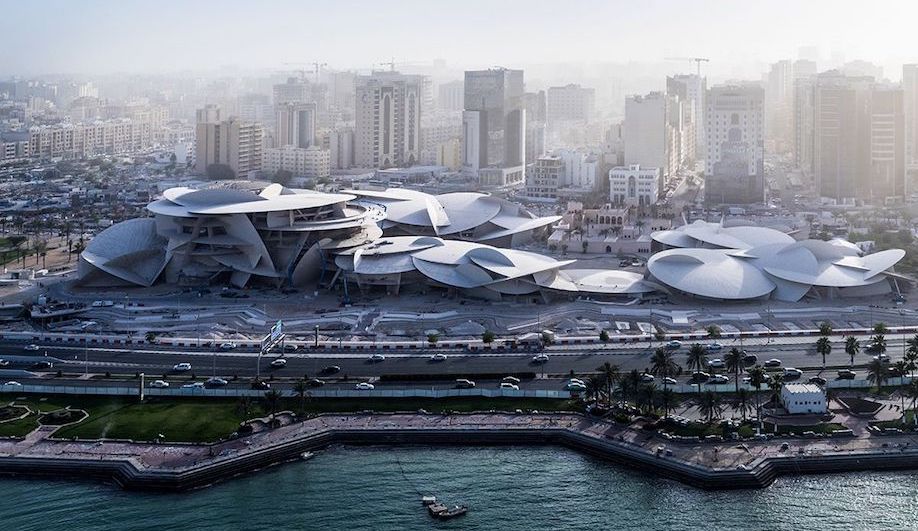
Conceived as a physical embodiment of both the region’s history and of Qatar’s explosive 21st century growth, the museum stretches across an imposing 140,000-square-metre site at the south end of Doha’s Corniche waterfront promenade. From outside, the complex reads as a colossal sculpture — or a moored spaceship.
“Barely anything about the museum is legible as a conventional building,” Oliver Wainwright, of The Guardian, writes. Yet, despite a sense of abstraction, the Pritzker Prize-winning architect’s interlocking discs and cantilevers unfold in a thoughtful sequence of indoor and outdoor spaces, invoking the region’s natural landscape and cultural history.

Commanding attention with a spectacular and seemingly random array of extruded plates, Nouvel’s design draws inspiration from the region’s “desert rose” rock formations – crystalline structures created by the interactions of minerals and soil in the shallow salt basins of the Persian Gulf. It’s a reasonable likeness. Beyond the obvious architectural spectacle, the interplay of discs creates a richly varied public realm below. In some spots, quiet nooks offer moments of shaded respite, while the deftly configured angles reveal panoramic views — or places to gather – in more active zones.
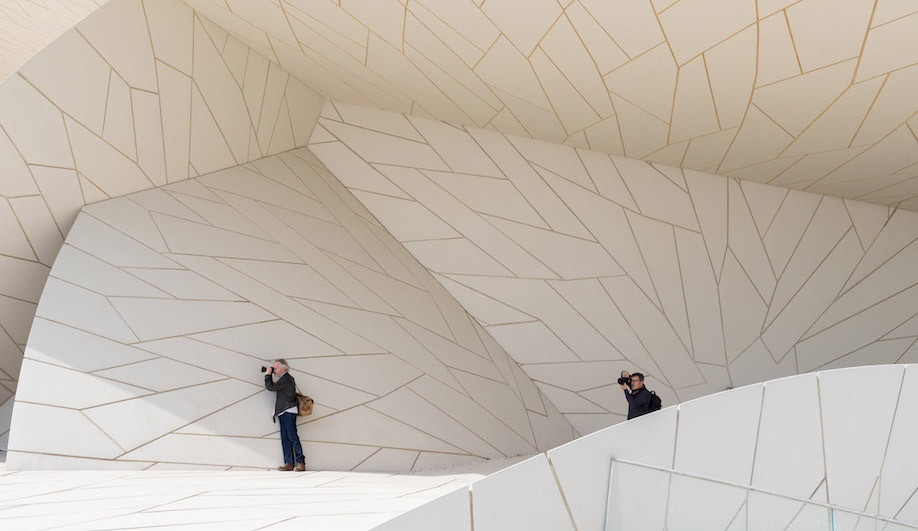
The new museum sits alongside a 1900s royal palace, with the historic building incorporated into the complex. For all its gravity-defying drama, the museum’s 52,000-square-metre floor area meets the much smaller palace of Sheikh Abdullah Bin Jassim Al Thani — restored by Germany’s ZRS Architekten Ingenieure in 2014 — with a deferential touch, stepping back from the historic walls to carve out a generous courtyard at the heart of the site. Here, the play of angled discs provides vital shade, evoking the “caravanserai” buildings that sheltered the region’s travellers and merchants for much of the last millennium.
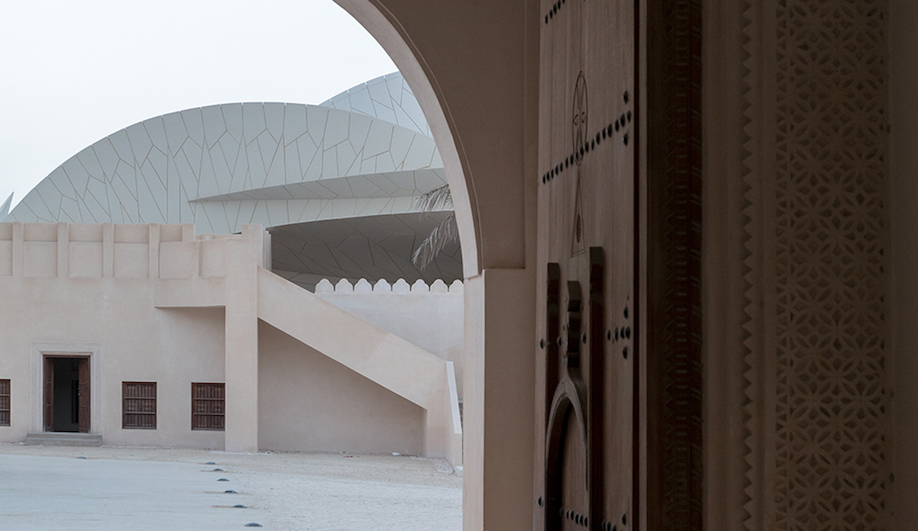
Inside, museum-goers are guided through a 1.5-kilometre loop of galleries. Opening with a survey of natural history that spans hundreds of millions of years of fossils and geological records, the 11 galleries follow a roughly chronological timeline. The epic scale of geologic time gradually gives way to comparatively recent archeological insights, and depictions of more modern cultural traditions, culminating in the 20th century discovery of oil in the Persian Gulf. As visitors move through the space, the gradually sloping floor reinforces the optimistic sense of chronology. The future, Nouvel suggests, is always a little bit further up.
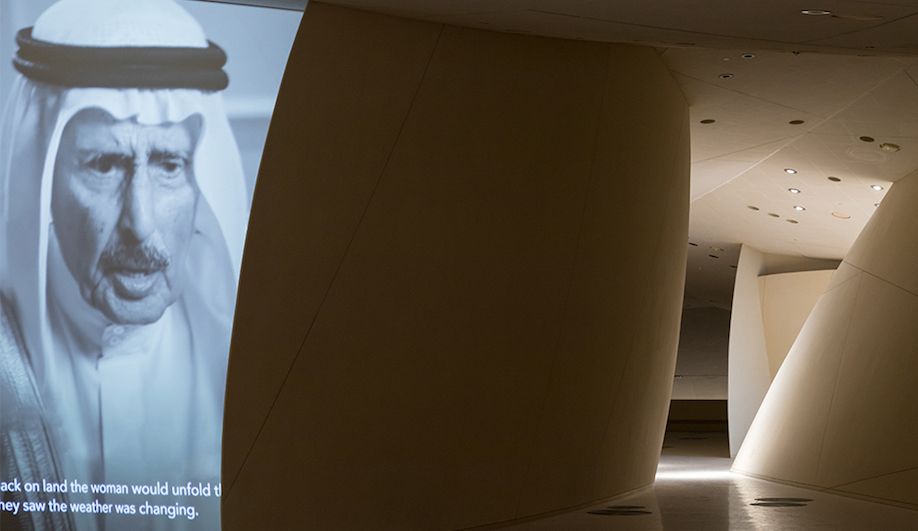
While the museum’s irregular form allows for dramatically sloping ceilings and highly varied spaces, it also restricts the scope of the exhibits. Many walls are too uneven to hang displays, with projections used to animate these spaces instead.

Designed by Sydney’s Koichi Takada Architects, the museum’s interiors feature a diverse array of organic forms and, like Nouvel’s design, aim to reflect Qatar’s natural and cultural heritage. Inside and out, the Qatar National Museum’s unique spaces required an almost unparalleled degree of technical sophistication.
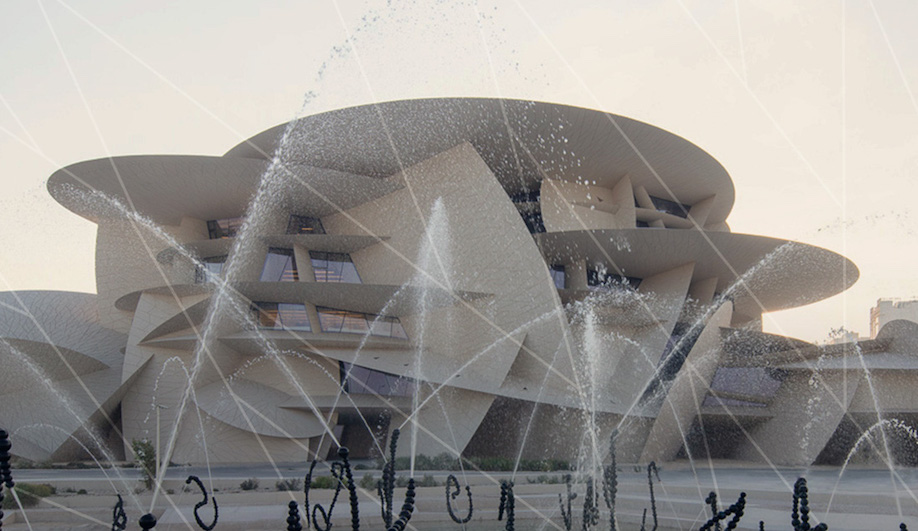
“To construct a building with great curved disks, intersections, and cantilevered angles — the kind of shapes made by a desert rose — we had to meet enormous technical challenges,” says Nouvel. “This building is at the cutting edge of technology, like Qatar itself. As a result, it is a total object: an experience that is at once architectural, spatial, and sensory, with spaces inside that exist nowhere else.”
In Doha, Jean Nouvel’s massively ambitious Qatar National Museum evokes a “desert rose” crystal formation on the Gulf coast.
